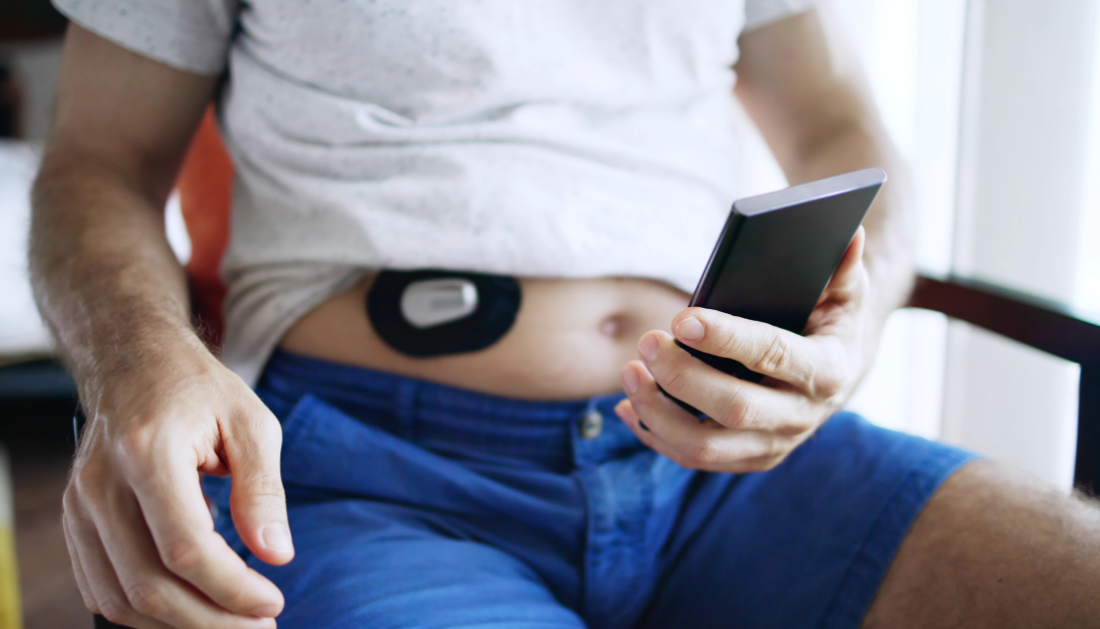

CGMs and Their Expanding Use
Originally developed for diabetes management, Continuous Glucose Monitors (CGMs) are now widely used by health-conscious individuals to track how foods impact their blood sugar levels. However, a new study from the University of Bath, published in the American Journal of Clinical Nutrition, raises concerns about their accuracy, particularly in healthy adults. Researchers found that Continuous Glucose Monitors (CGMs) may overestimate blood sugar levels, leading users to make unnecessary dietary changes.
Study Design and Key Findings
The research, conducted by the Center for Nutrition, Exercise, and Metabolism at the University of Bath, evaluated the accuracy of CGMs by comparing their readings to the gold-standard finger-prick test. The study involved healthy participants consuming various fruit-based products, including whole fruits and smoothies, while measuring blood sugar responses using both methods.
The results showed significant discrepancies:
- CGMs overestimated the glycemic index (GI) of smoothies by 30%, misclassifying them as medium-GI instead of low-GI as per finger-prick tests.
- Whole fruits were incorrectly classified as medium- or high-GI by CGMs, despite their actual low-GI status.
- CGMs exaggerated the time spent above healthy blood sugar thresholds by nearly 400%, which could cause unnecessary concern among users.
- The study also debunked the myth that blending fruit increases its glycemic index.
Implications for CGM Users
Lead researcher Professor Javier Gonzalez emphasizes that while CGMs are beneficial for people with diabetes, healthy individuals should be cautious when using them for dietary decisions. He explains that CGMs measure glucose in interstitial fluid, not directly in blood, leading to potential delays and discrepancies.
Helen Whitby, a nutritionist at Innocent Drinks, adds that fruits and smoothies provide steady energy without harmful glucose spikes, reinforcing the importance of accurate glucose tracking.
Future Research and Recommendations
The study highlights the need to improve CGM accuracy to prevent misleading results in non-diabetic users. Until then, finger-prick tests remain the most reliable method for assessing blood sugar levels and glycemic response.
More Information: Continuous glucose monitor overestimates glycemia, with the magnitude of bias 3 varying by postprandial test and individual—A randomized crossover trial, American Journal of Clinical Nutrition (2025). DOI: 10.1016/j.ajcnut.2025.02.024
more recommended stories
 Pelvic Floor Disorders: Treatable Yet Often Ignored
Pelvic Floor Disorders: Treatable Yet Often IgnoredKey Takeaways (Quick Summary) Pelvic floor.
 Urine-Based microRNA Aging Clock Predicts Biological Age
Urine-Based microRNA Aging Clock Predicts Biological AgeKey Takeaways (Quick Summary) Researchers developed.
 Circadian Control of Neutrophils in Myocardial Infarction
Circadian Control of Neutrophils in Myocardial InfarctionKey Takeaways for HCPs Neutrophil activity.
 E-Cigarette Use and Heart Attack Risk in Former Smokers
E-Cigarette Use and Heart Attack Risk in Former SmokersKey Takeaways for Clinicians and Nurses.
 Ultramarathon Physiology: What HCPs Should Know?
Ultramarathon Physiology: What HCPs Should Know?Ultramarathon Metabolism: What Happens to the.
 High-Intensity Training and Oxidative Stress Insights
High-Intensity Training and Oxidative Stress InsightsNew Evidence Linking High-Intensity Training and.
 Sterilized Fermented Beverage for Obesity: New Evidence
Sterilized Fermented Beverage for Obesity: New EvidenceEarly Insights Into a Sterilized Fermented.
 Cardiovascular Risk and Sudden Cardiac Death in Diabetes
Cardiovascular Risk and Sudden Cardiac Death in DiabetesRising Sudden Cardiac Death (SCD) Risk.
 Perinatal Mental Health Challenges Highlighted in New Study
Perinatal Mental Health Challenges Highlighted in New StudyMental Health Challenges in New Parents:.
 Walking Speed Before Hip Replacement Predicts Recovery
Walking Speed Before Hip Replacement Predicts RecoveryNew Evidence Points to a Simple,.

Leave a Comment